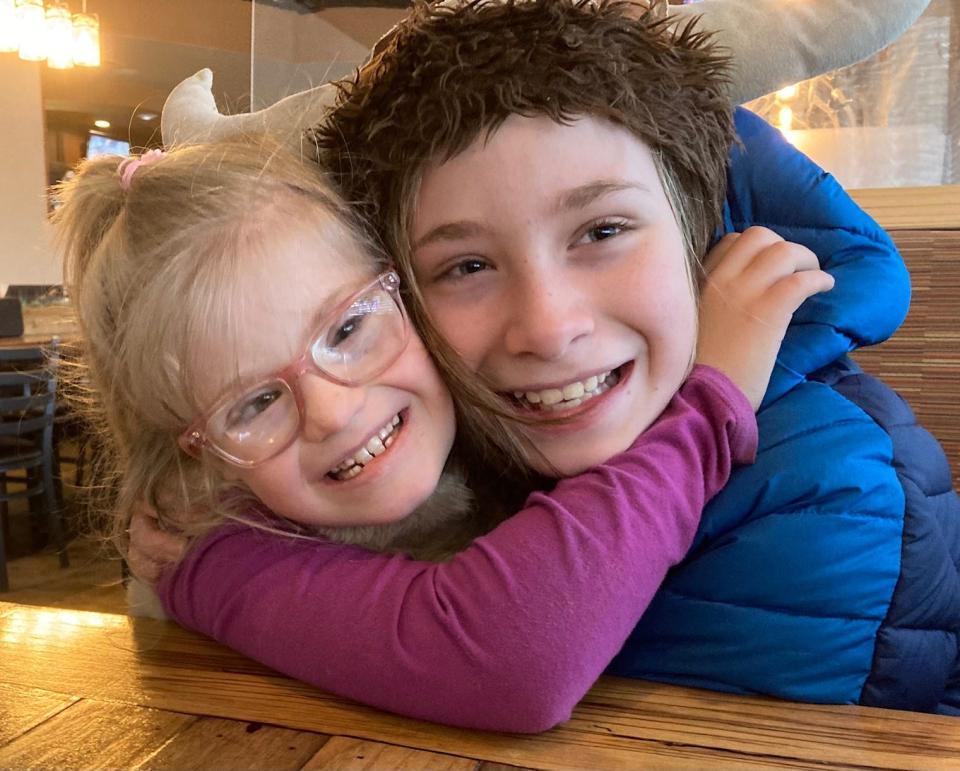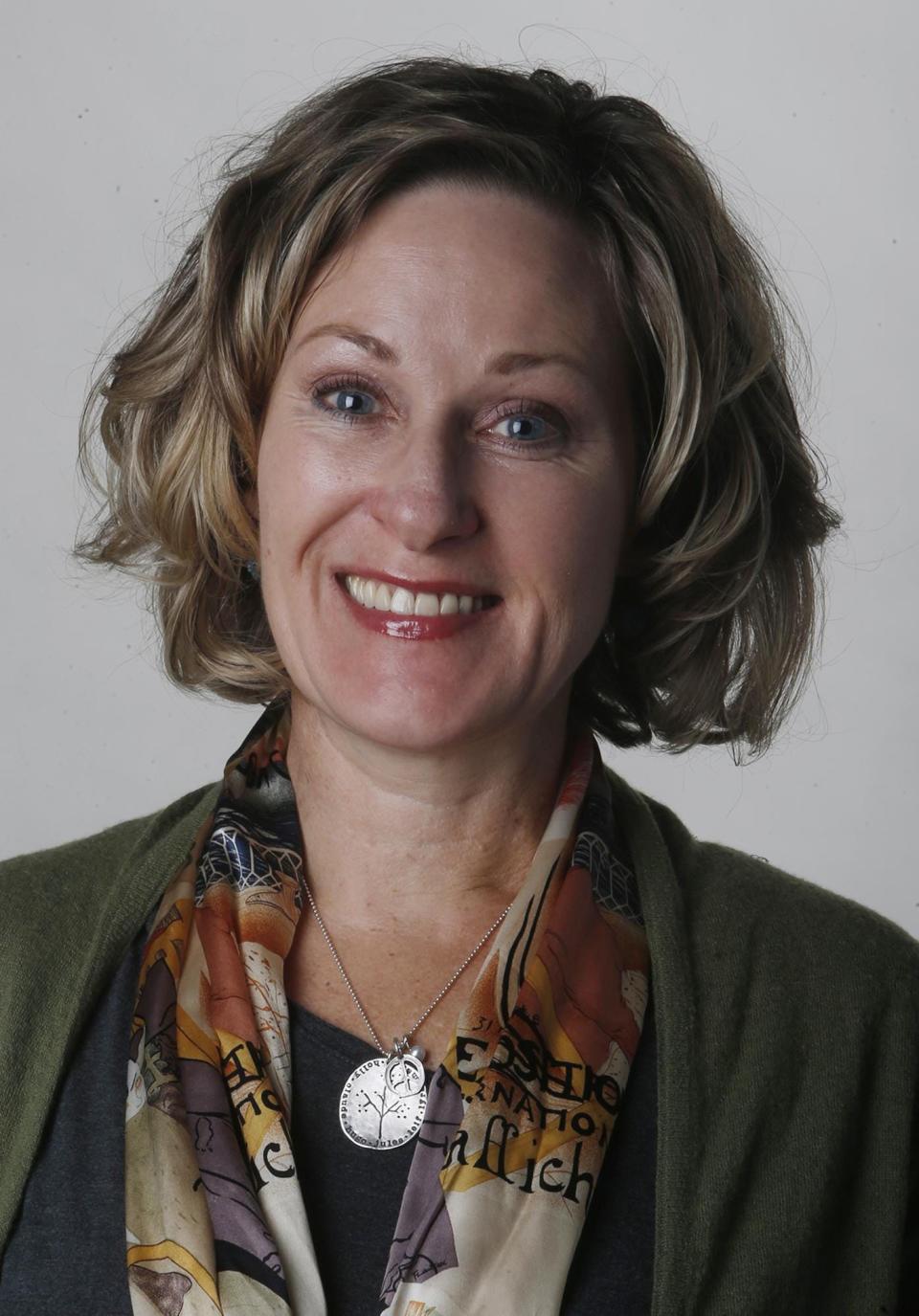Holly Christensen: More inclusion, less ableism
Recently I saw a photo of yet another young woman with Down syndrome who has become a model, in this case for Victoria’s Secret.
“Do you think she’s had cosmetic surgery?” I asked my friend who happens to be an eye doctor.
“I was wondering the same thing,” he said before asking, “What do you think of that?”
More: Holly Christensen: Making masks optional in Akron schools was the right decision
Down syndrome, the most common chromosomal disorder, is caused by an extra copy of the 21st chromosome. It causes intellectual disabilities (from mild to significant) and a variety of physical features, including epicanthal eye folds, which is a prolongation of the upper eyelid fold.
I didn’t know the term “epicanthal fold” when I looked at my daughter moments after her birth and blurted out, “Her eyes looked kind of Downsy.”
Why would someone with DS undergo eyelid surgery if it was medically unnecessary? Perhaps because epicanthal folds, which vary from person to person, can make it easy to identify someone’s diagnosis of DS.

The summer of 2018 my daughter, Lyra, was old enough to join her brother at the summer day camp in Michigan that he’d attended the previous two summers. Five minutes after I dropped them off on their first day, I received a call from the camp director.
“Lyra stepped in a puddle and needs a dry pair of socks. And, frankly, we’re just not set up for her,” she told me.
“What do you mean you aren’t set up for Lyra?” I demanded more than asked, causing the woman on the other end of the line to sputter.
To see my daughter’s features is to know she has Down syndrome. Ascribing outmoded or patently false notions about what it means to have DS is still far too common, especially among people my age or older.
Lyra’s no box of rocks. She talks, reads, sings and plays like, well, other children. And she will happily outsmart anyone who mistakenly assumes she’s incapable of performing a task and let them do it for her.
There was a new camp director the second summer Lyra attended. For several weeks each summer since, the camp director and counselors have not only accepted Lyra, but each is excited when Lyra is assigned to their group for any given week. Several email me throughout the year for Lyra updates and one wrote a paper on inclusion, with Lyra as an example, for a college course.

Like all bigotry, ableism, or the discrimination of people with disabilities, is learned. Probably the best way to unlearn bigotry is through regular interaction with people whose ethnicity, religion, sexual orientation/identity and/or abilities, are different than one’s own. Through conversation and interaction it becomes undeniably apparent that we are all “more alike than different,” which also happens to be the motto of the National Down Syndrome Congress.
Policies that embrace inclusion, in which people with disabilities are not sequestered, but included in typical classrooms, jobs and more, benefit everyone. Yes, Lyra’s DS affects her cognition, but that’s not a reason to have her in a room down the hall from her typical peers.
In inclusive settings, my daughter’s abilities in everything from speech to somersaults improve. At the same time, her typical peers learn how to have a friend with a disability, how to be occasionally helpful without infantilizing. They come to know my girl for the person she is and not the diagnosis she has.
This alone is reason enough to include people with disabilities in any setting. But beyond increasing compassion, and thereby reducing bigotry, typical kids who have a peer with DS in their classrooms have been shown to score higher on college entrance exams than students who do not have the advantage of having a classmate with DS.
We recently enrolled Lyra in the aftercare program at the Shaw JCC. When the program’s director expressed concerns about meeting Lyra’s needs, I was reminded of Lyra’s first year at summer camp.
But instead of resisting Lyra’s enrollment, the JCC has increased its aftercare staff by one and welcomed training from the Summit DD Board to ensure they are able to meet the needs of all the children in the program.
And therein lies something about advocacy that is often overlooked. Advocating for inclusion in any setting often results in an improved situation not just for one child, but all participants.
The answer to my friend’s question about what I think of people with DS undergoing cosmetic surgery is complicated. History is filled with marginalized people attempting to pass to avoid discrimination and even violence.
When she’s an adult, my daughter may seek surgery so as not to be unfairly assessed based upon misguided or even cruel assumptions. I hope not, because it’s a severe, and, frankly, unfair, solution to the societal problem of discrimination.
Meanwhile, I will continue working to make the world a place where my daughter and others with Down syndrome are seen not as their diagnosis but as the full humans and assets to their communities that they are.
Contact Holly Christensen at whoopsiepiggle@gmail.com.
More: Holly Christensen: Global power and the Ukrainian fulcrum
More: Holly Christensen: Banning books an exercise in fear and folly
This article originally appeared on Akron Beacon Journal: Bigotry against people with disabilities can be unlearned

